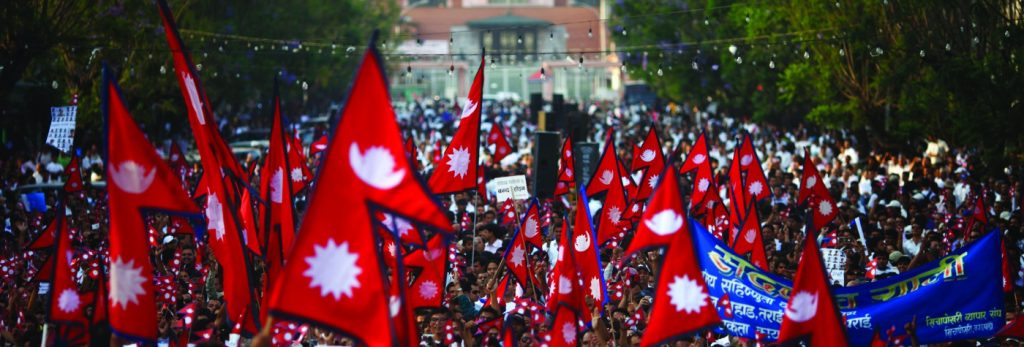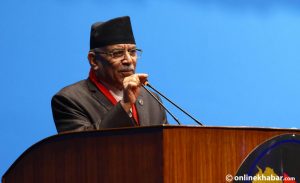
Women’s rights refer to the legal, social, and cultural rights and entitlements claimed for women and girls worldwide. These rights aim to address historical and systemic gender inequalities by promoting equal opportunities, treatment, and protection in various aspects of life.
They encompass a wide range of issues including, but not limited to political rights, economic rights, educational rights, reproductive rights, protection from violence and social rights.
Provision of women’s rights in the constitution of Nepal

The Constitution guarantees women’s rights as a fundamental right, reaffirms the right to safe motherhood and reproductive health, education, health, employment, equal pay, social security and property rights and guarantees the inclusion of women in all state bodies based on the principle of proportional inclusion.
Nepal’s constitution guarantees equal rights to men and women and prohibits gender-based discrimination. Yet, it also contains provisions that blatantly discriminate against women, for instance, by limiting their ability to confer citizenship to their children.
Nepal’s new government is reportedly preparing to bring the long-awaited Nepal Citizenship Act (Amendment) Bill back to parliament bill does not address longstanding discriminatory provisions that make it harder for children of Nepali women to obtain citizenship than it is for children of Nepali men.
According to Article 11(7) of the constitution, Nepali men can automatically confer citizenship to their children by descent, but Nepali women must prove that their child’s father is Nepali or declare he is “unidentified.” If such a declaration is proven false, the women would face prosecution. This provision not only infringes on women’s rights to privacy but also renders women unequal under the law.
Nepal’s citizenship laws disproportionately affect female members of the marginalised Madhesi community mostly living near the Indo-Nepal border and often having cross-border marriages, as well as unmarried mothers, including rape survivors. These laws have made thousands of children in Nepal effectively stateless, making it impossible for them to pursue higher education, formal employment, or access state benefits and services.
Politicians justify this discrimination as a means of defending nationalism and “sovereignty,” all at the expense of Nepali women’s rights.
Nepal’s citizenship laws contravene its constitution and violate the Convention on the Elimination of All Forms of Discrimination Against Women, which Nepal ratified in 1991, as well as the Convention on the Rights of the Child, which Nepal ratified in 1989.
This International Women’s Day, whose theme is Embrace Equity, the government should swiftly amend the patriarchal and discriminatory citizenship laws that undermine Nepali women’s identities and make them second-class citizens. In particular, Prime Minister Pushpa Kamala Dahal should make good on his promise to adopt the Nepal Citizenship Act (Amendment) Bill within the next six months, with further amendments to uphold Nepali women’s right to equal citizenship.
Historical development of women’s rights in Nepal
The practice of the Sati system in society was one of the first forms of discrimination against women in Nepal. Rana Prime Minister Chandra Shamsher eradicated it. Even after that, the patriarchal situation continued, with women receiving limited access to resources and opportunities. A few of the major issues faced by women were Gender-Based Violence, Child marriage, trafficking of women, transitional justice, unequal representation and participation of women in decision-making.
Literacy rates in Nepal remain low, at 52.74 per cent (CBS, 2001). Despite improvement in recent years, the disparity in literacy rates between men and women remains. In 2001, the rate of literacy for females stood at 42.49 per cent. The low rate of literacy for women can be attributed to the discrimination they face at home.
Females face gender-based violence and this greatly limits their ability to attend school or receive proper education. Furthermore, religion restricts the opportunities for women to receive education. For example, the majority of the female Muslim population in Nepal is still deprived of basic education, with only 20 per cent having had any level of education.
The percentage of women from rural areas who have never attended school is 51.1 per cent (CBS, 2008) compared to the percentage of women from urban areas who have never attended school is 25 per cent (CBS, 2008).
This is reflected in the disparity in literacy rates, between women in rural areas, 36.5 per cent, and those in urban areas, 61.5 per cent. Literacy rates in rural areas are almost half that in urban areas. Although overall female participation in the workforce has increased, the majority of employed women are still heavily concentrated in the low-wage and more labour-intensive industries.
Formal sector female participation is 6 per cent. According to the 2008 report from CBS, there were 155,000 male professionals, but only 48,000 female professionals, about 31 per cent of female professionals. This is in stark contrast to female participation in the subsistence agricultural sector, with female participation almost 160 per cent of male participation.
Due to the growing inequality and violence against women, free legal aid was made available by the government of Nepal through the enactment of the Legal Aid Act 1997, though the majority target groups of women, children and the disenfranchised are unable to access it. Women’s rights were only taken seriously once Nepal was under democratic rule post-1990, and a constitution was formed stating equality between men and women as a fundamental right.
The newly elected democratic government ratified numerous laws and international treaties specific to women, and The Nepal Treaty Act of 1990 ensured that international human rights provisions would be given preference in case of conflict with domestic laws. The laws enforced in 1990 were only finally enacted in 2006, and since the 1990s, Public Interest Litigation (PIL) has been one of the key tools used by women to voice their opinions and enactment of women’s rights.
The 1990s saw substantial changes in laws within Nepal, which facilitated the interest and formation of NGOs, both as recipients of these programs and as staff members of the NGOs. This began the movement of women’s empowerment and mobilisation of women’s NGOs.
Due to ongoing violence and discrimination against women, the United Nation’s recommendations of the Working Group on the Universal Periodic Review to the Government of Nepal, in March 2011 included guaranteeing full rights to equality and non-discrimination between men and women in line with the international standards (with that of Italy). Furthermore, CEDAW Committee’s Concluding Observations and Recommendations to the Government of Nepal, August 2011 included introducing monitoring mechanisms for better implementation of laws and plans about equality and development of gender disparity indicators.
Legal provisions of women’s right in Nepal
Nepal’s constitution guarantees equal rights to men and women and prohibits gender-based discrimination. Yet, it also contains provisions that blatantly discriminate against women, for instance, by limiting their ability to confer citizenship to their children.
Nepal has enacted several legal provisions to safeguard and promote women’s rights. Key legislations and constitutional provisions include:
- Constitution of Nepal, 2015: Article 18 Guarantees equality before the law and equal protection of the law. It prohibits discrimination on the grounds of religion, race, caste, sex, origin, language, or ideology – Article 38 Specifically deals with women’s rights, ensuring rights to participate in all state structures and bodies on the basis of the principle of proportional inclusion, rights against all forms of exploitation, and rights related to health, reproduction, and maternity benefits.
- Muluki Ain (General Code): Incorporates various provisions on women’s property rights, marriage, and family law, providing women with equal inheritance rights.
- Domestic Violence (Offense and Punishment) Act, 2009: Provides legal protection against domestic violence, defines domestic violence, and sets forth punishment for perpetrators.
- Gender Equality Act, 2006: Amends discriminatory laws and provisions, aiming to eliminate gender discrimination in different legal sectors.
- Human Trafficking and Transportation (Control) Act, 2007: Provides comprehensive measures to combat human trafficking and sexual exploitation, with strict penalties for offenders.
- National Women Commission Act, 2007: Establishes the National Women Commission, a statutory body to protect and promote the rights and interests of women in Nepal.
- Sexual Harassment at Workplace Prevention Act, 2015: Aims to prevent and address sexual harassment in workplaces, ensuring a safe working environment for women.
- Nepali Citizenship Act, 2006: Ensures that women have the right to confer citizenship to their children, although there have been ongoing debates and calls for further amendments to ensure complete equality in this regard.
These legal frameworks reflect Nepal’s commitment to advancing women’s rights and ensuring gender equality, although challenges in implementation and cultural practices remain.




















